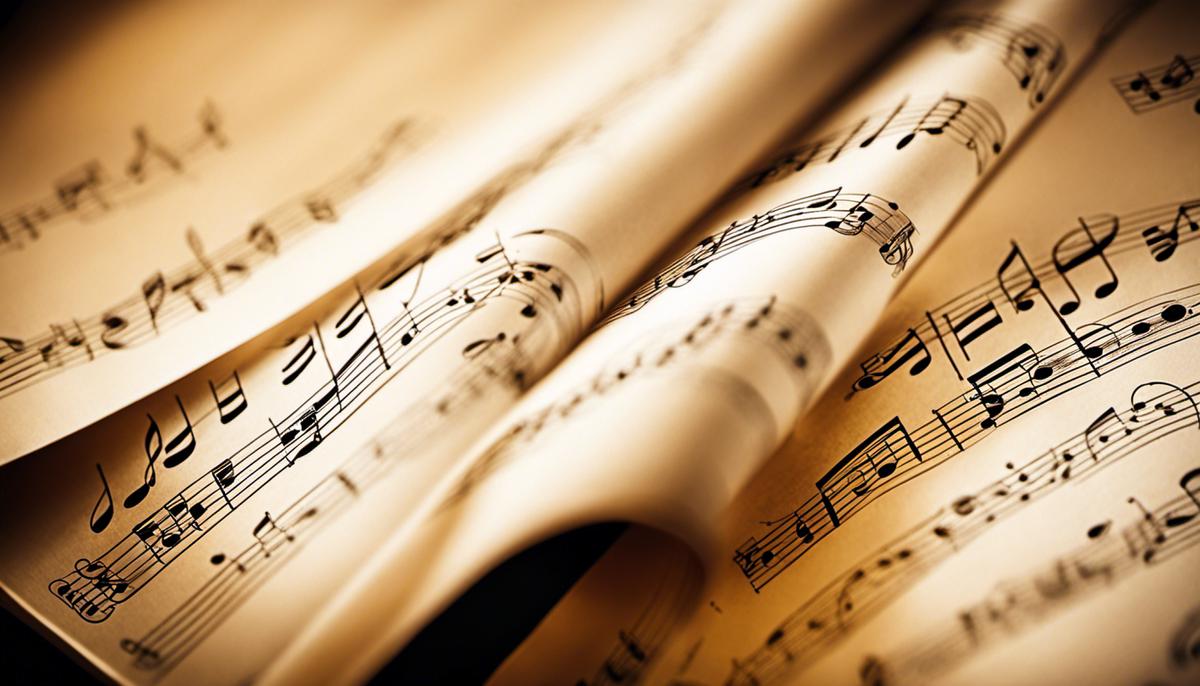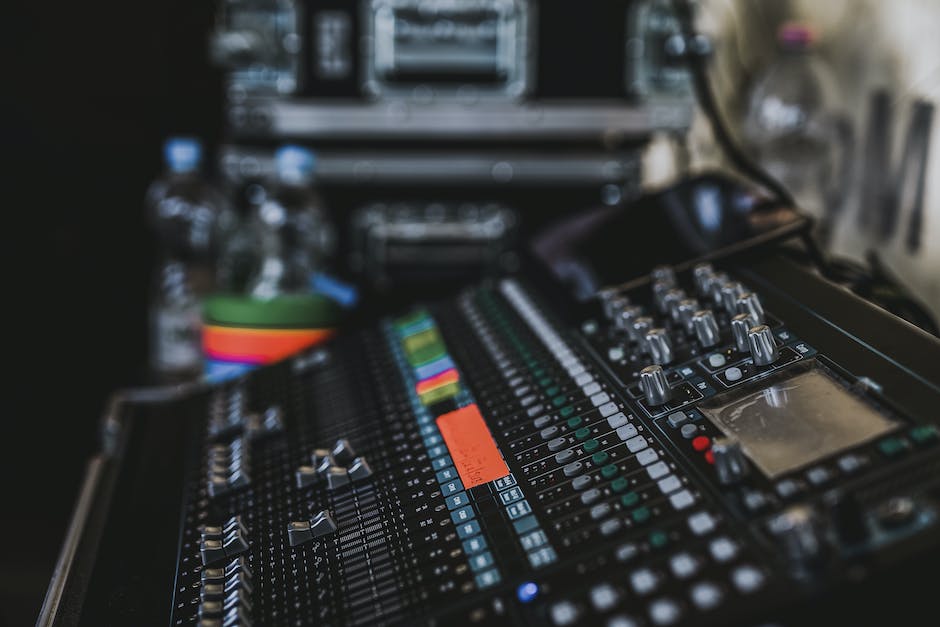The art of vocal harmonies is a symphony, where voices intertwine to create something magical and melodious. This captivating vocal arrangement is much more than merely singing different notes at the same time. It involves understanding the structure of vocal harmony, developing keen listening skills, and acquiring adeptness at recording multiple vocals simultaneously. Comprehending the concept of melody versus harmony, exploring the intricacies of chord structures, and developing an ear for pitch, tone, and rhythm are fundamental elements in mastering this art. The goal is to blend these harmonious elements seamlessly, creating an immersive auditory experience that moves and resonates with listeners.
Understanding Vocal Harmony Structure
Harmonizing Grace: Unraveling The Secret Of Harmony Structures In Vocal Recording
In the euphonic universe of music, harmony is not just a musical technique but an interplay of emotion, expression, and rhythm that shapes the soul of the melody. The intertwining of voices in harmony produces that exquisite mosaic effect that engages the listener and pulls them into the heart of the piece. It’s the secret ingredient that adds depth and dimension.
Harmony is the symphony beneath the melody, like a painting beneath the brush strokes. It has the power to elevate a single tone into a symphony that resonates within the heart of the listener. But exactly how does harmony come to life in vocal recording? Let’s dive into the deep end of the harmony structure pool and discover its secrets.
First, harmony must have a root. In the language of music, the root is also regarded as the “tonic” or the first note of a scale. The root note or the melody line provides the fundamental stepping stone to building the harmony.
Next comes the harmony’s strings—thirds and the fifths. If a melody lies on the root or the ‘tonic’, the harmony’s base will be in the 3rd and 5th notes on the scale. In simple terms, if the melody line is singing a ‘C’, harmony singer one would ideally adopt an ‘E’ (third) and harmony singer two, a ‘G’ (fifth).
Harmony then blossoms through chord progression. In a typical vocal recording, songwriters cycle through different chords while maintaining the melody. Usually, the chord progression in a piece follows a particular sequence known as the “Circle of Fifths”, but the freedom of creative expression allows for interesting and innovative progressions.
Following the creation, there is Conversational Harmonization. This technique is making waves in vocal recording. It involves the adjustment of harmony phrases to correspond and “converse” with the melody line, creating an enchanting back-and-forth, a dialogue of tones.
Intricacies of harmony don’t end here. There is also Antiphonal Harmonization, which creates a “call-and-response” pattern, and Ostinato Harmonization, where a repeating motif runs like a thread tying the harmony together.
Finally, a balance must be found. Too much harmony can overshadow the melody, and too little can leave a song sounding hollow. Like salt to soup, harmony should enhance, not overwhelm the melody.
Crafting a harmonious structure in vocal recording is not just about the technicalities—it’s about the artistry. It’s about blurring lines between different notes to create a masterpiece that resonates and throbs with life. With the right understanding and a dash of creativity, a song can be woven into a tapestry of harmony that sways the listener and immerses them in its rhythm.
More than knowledge, harmony requires practice, intuition, and a profound love of music. With these tools at hand, anybody can unravel the mystical chords of harmony, and craft a symphony that reverberates far and wide, uniting audiences in the universal language of music. Each harmony created then becomes a word, a sentence, a paragraph in the age-old narrative of human emotion, written in a timeless tongue everybody innately understands and responds to—Music.

Developing Your Listening Skills
Configuring Your Harmonic Radar: Carving out Vocal Harmonies with Precision
Once you’re familiar with music’s essentials – root notes, chord progressions, thirds and fifths, and common techniques of harmonization – wrapping your ears around the fine details of harmony might require a little more attention. Just as a master painter imbues their final brush strokes with a touch of finesse, your auditory keenness can be polished to perfection, to grasp the finely nuanced vocal harmonies that are at the heart of our favorite melodic compositions.
First, we’ll dive into a concept we’re calling ‘harmonic dissection.’ This process stems from a purposeful repetition of a song with the intention of slicing it into its key components. This allows you to concentrate on the entire harmonic backbone as a solo entity, dissecting the intertwined vocal interplay by focusing on each individual layer. The best avenue to achieve this is by employing high-quality earphones. In-ear monitors, renowned for being highly isolating, offer an excellent choice for the discerning music aficionary intent on honing their harmonic acumen.
Among the must-have skills is the ability to identify and familiarize oneself with intervals. An understanding of the pause or ‘gap’ within notes makes for an essential navigational compass while charting the expansive sea of harmonies. Begin listening by searching out these intervals. Solfa, an ear training technique often used in musical education, can be your best ally here. Employing the solfa methodology to recognize different note intervals can sharpen your harmonic intuition.
Next up: the application of ‘active listening.’ This targets, not the passive listener, but the engaged maven who consciously pays heed to the harmonic nuances in a song. Often, while paying attention to the leading vocals or primary melody, we tend to overlook the subtlety underlying harmonies lend to the overall musical landscape. These essential elements add texture, depth, and color that make a composition unforgettable. Taking the time to develop active listening evolves your overall music appreciation by unveiling the hidden harmonic stratospheres that often lay unnoticed.
Another important tactic to cultivate harmonic mastery is by singing along with your favorite records. Though seemingly rudimentary, this technique actively engages your vocal chords and audial perception, symbiotically illuminating the road to harmonic prowess. Initiate this by starting with the melody, then veering off into harmony’s fascinating backroads, finding the less-travelled pathways that guide you into a deeper understanding.
Venture a step further and challenge yourself with ‘harmony mapping.’ This endeavor involves jotting down, visually sketching, or mentally picturing the full harmonic pathway of a song. In essence, you plot the harmonic shifts and transitions in a composed piece, availing a richer blueprint of its harmonic design. This exercise of ‘seeing the unseen’ opens divergent avenues of perception creating a more holistic understanding of the music you consume.
Witnessing live music can be a harmonically enlightening experience. It presents an unadulterated view into the intricacies of harmonies, showcasing how musicians meld individual voices into one symphony. Whether it’s an intimate gig in your local bar or an electrifying set at a music festival, the live music scene is a vibrant laboratory for harmonic exploration.
Collectively, harmony, when accurately perceived, broadens the auditory vista, converting the music experience from monotone to technicolor. Its atomic precision, coupled with sprawling imagination, culminates in a vivid universe of sound that lingers long after the final note fades away. So, immerse yourself, tune in, and let harmony illuminate your musical pathways.

Techniques for Recording Multiple Vocals
Crafting a vocal harmony that reverberates with the soul and resonates with the heart is an art of musical mastery.
This begins with the process of recording multiple vocal tracks effectively. Each voice is a color in the artist’s palette, adding depth, emotion, and texture to the musical canvas. This piece will converse about methods to bring those vocal tracks together in a harmonious symphony.
Starting off, let us talk about ‘Layering’. Consider the song a layered cake, each layer should enhance, and not overpower the other. Record the harmony layers separately, giving attention to each line as its entity. Everyone involved must articulate and tune their vocal parts perfectly to prevent any imbalance in the final mix. Use a quality microphone and avoid unnecessary effects during this stage; it’s all about capturing the raw, unfiltered expression of the vocals.
One technique that music aficionados swear by is ‘Panning’. This involves distributing the sound in a stereo or multi-channel sound field. For harmonies, it’s effective to pan different vocal tracks slightly off-center, allowing the primary vocal track to remain dominant while the harmony vocals surround the listener, creating a rich, immersive experience.
Audio editing software, like Pro Tools or Logic Pro X, can be your trusted ally in crafting beautiful harmonies. These programs provide functions like ‘Pitch Correcting’ and ‘Time Aligning’, which let you fine-tune each track, ensuring they blend smoothly. Remember, tools like these are to augment your creative vision, not dominate it; let organic originality reign.
Another significant aspect of recording multiple vocal tracks is the ‘Mic Technique’. Vocalists must keep the right distance and angle from the microphone; this can vary according to the voice type and the mic used. Experiment with this till you find the sweet spot, where the voice is captured accurately.
‘Track Doubling’ can also bolster harmonies. In this technique, each vocal track is sung and recorded more than once. It has been widely used by eclectic musicians such as The Beatles and Led Zeppelin. If layered carefully, doubles can fortify the vocals, enhancing the texture and depth, making the harmony robust and captivating.
Lastly, upon recording, it’s now time for the ‘Mixing’ phase. Balance the levels, apply creative effects like reverb or echo, and accentuate certain vowel sounds. This process will meld the voices into an interconnected musical experience.
Let this guide punctuate your recording sessions with triumphant exclamations of harmony. Remember, the ultimate goal is to paint a soundscape that stimulates listeners, transports them to an aural utopia, and binds them through the sacrosanct language of music. Each voice, each note, is a potent whisper in the hum of the cosmos, contributing to the all-encompassing symphony of harmony. So, take the plunge, tap into your creative soul, and forge harmonious vocal tracks that echo through eternity.

As we delve into the artistry of vocal harmonies, it becomes clear that the path to creating perfect harmony is about careful craftsmanship. With a deep understanding of vocal harmony’s structure, sharpened listening skills, and the proficient execution of multiple vocals recording techniques, one can indeed create mesmerizing harmonies that amplify the emotional resonance of a song. Remember, the beauty of vocal harmony lies in its blend – each individual voice contributes to the whole without losing its unique essence. As you continue to experiment with these techniques and refine your skills, may you find joy in the journey and elevation in the harmony you create.

Comments.
Currently there are no comments related to this article. You have a special honor to be the first commenter. Thanks!